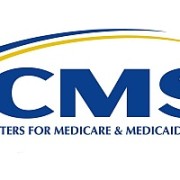CMS Meaningful Use Final Rule – What EPs Need to Know
If you aren’t busy watching the leaves turn or soaking up the last bit of Summer, then you know the big news out of the Centers for Medicare and Medicaid Services (CMS) about the Meaningful Use Program.
The CMS Rule published on September 4th allows Eligible Providers some flexibility within Meaningful Use for 2014. Many physician practices are struggling with vendor implementation timelines, obtaining Direct IDs, and inaccurate reports, just to name a few. So before you go counting your chickens before they hatch, let’s break it down…
All about that CMS Meaningful Use final rule…
In order to take advantage of the changes, you must qualify for them!
A provider qualifies for the exception if they could not fully implement 2014 Edition CEHRT due to delays in availability. This means, even if you were able to implement a 2014 Edition CEHRT, the implementation delay could have negatively impacted your ability to deploy, train staff, test the system and/or make workflow revisions.
CMS does not allow the exception in these circumstances:
- Provider experienced financial issues with purchase or implementation
- Provider waited too long to purchase software
- Clinic experienced staffing or resource constraints
- Unable to meet certain measure thresholds for Stage 2
So you qualify, then what?
The table below defines your options based on which edition of CEHRT you used during your reporting period in 2014 (reporting period is 90 days on a calendar quarter).
You don’t qualify, bummer… There’s another way!
A limited exception exists within the Summary of Care Objective (Core Measure #15 in Stage 2) – specifically measure 2 requiring providers to transmit 10% of their Summary of Care documents electronically to the recipient. If your referring providers are experiencing issues related to 2014 Edition CEHRT availability delays and this results in the inability for you to electronically transmit the Summary of Care document to them, you can claim the exception and use the option below.
Option: Attest to 2014 Stage 1 Objectives/Measures
Documentation: It’s important you retain all documentation clearly demonstrating you were unable to meet this measure.
One more thing to note….
Stage 3 will now begin on January 1, 2017. See the table below to determine your updated timeline.
First Year, Stage 1 Information:
For those providers attesting to Stage 1 for the first time in 2014 – your situation could get sticky. Here’s the information you need:
To Avoid the Penalty: Attest for any 90 day reporting period by 10/1/14.
Aren’t ready to attest next week?
The provider will receive a penalty, but you can still receive the incentive! Attest for a 90 day period, beginning no later than 10/3/14. You must complete attestation by 2/28/15. This means the provider would receive an incentive and a penalty (incentive > penalty).
Suggestions and Reminders:
If you select 2013 Stage 1 objectives/measures, it’s important to ensure you have reviewed the requirements from 2013 and your EHR can generate these reports. Many EHR companies retired the 2013 rules at the beginning of the year to ensure providers did not accidentally incorrectly attest using them this year. Check with them ASAP before committing to this option.
It’s important to note, if you were scheduled to attest to Stage 2 this year and meet the qualifications to step back to Stage 1 – you will be required to attest to a full year of Stage 2 in 2015. Even if you know you qualify, we recommend you continue pushing to meet Stage 2 for this year. Providers will not be required to claim an exception for 2014 and select your option until you login to attest in January/February. This gives you some breathing room, but it’s important to remember – you’ll attest for a full year in 2015, no matter what Stage you’re in.
If you are taking advantage of these changes, documentation will be key! CMS does not provide specific guidance around what types of documentation will be accepted. We suggest keeping records of all tickets, emails and communication with your vendor as well as how that affected your business (updating workflows, testing plans, educating staff, etc). Putting together extensive documentation during Q4 will ensure you are ready to take advantage of the changes.
Overall, this is a tricky rule but is helpful to those who experienced delays that caused a domino effect during implementation and activation.
Cody Simpson, MPH
Consultant, MBA HealthGroup


